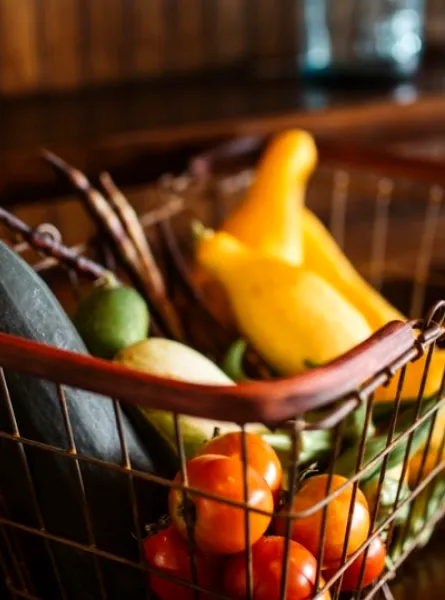
Faced with a rising global population and dwindling natural resources, the quest for new food sources becomes essential. How can we feed the planet without depleting our precious resources? Here's a look at clever solutions like lab-grown meat and insect proteins. These options, both nutritious and environmentally friendly, could revolutionize our menus! (1)
1. Eat Green, Reduce Your Footprint
The carbon footprint measures the greenhouse gases emitted by an activity or product, from production to end-of-life. Food production accounts for 26% of greenhouse gas emissions. Reducing our carbon footprint, especially through our dietary choices, is crucial for decreasing pollution and protecting our planet. For example, producing 100 g of beef protein generates about 50 kg of greenhouse gases, while the same amount of pea protein produces only 0.44 kg. (2)
2. Engage in the Circular Economy
The circular economy is an economic system that optimizes resource use by promoting reuse, recycling, repair, and regeneration of products and materials. Transforming our leftovers into valuable resources isn’t just an idea; it’s a cornerstone of the circular economy. (1) Why not take on the challenge yourself? Try cooking a new recipe with your food scraps that you would normally throw away.
3. Explore the Potential of Lab-Grown Meat for the Future
Lab-grown meat could save up to 96% in carbon emissions and reduce water use by 82% compared to traditional beef farming. More than just an innovation, it offers a sustainable alternative that could significantly reduce our ecological impact. (3)
4. Dare to Add Insects to the Menu
Rich in proteins, vitamins, and minerals, insects are a future food option with minimal ecological impact. Their farming requires few resources, and they thrive even on organic waste, fitting perfectly into a circular economy. (4) Take up the challenge and try pasta made from cricket flour brands like Entomos or Näak (made in Canada)!
5. Rise to the Challenges and Innovate with New Food Sources
Certainly, challenges abound: costs, cultural acceptability, and regulatory frameworks are all obstacles to overcome. For these new food sources to become widespread, strengthening collaboration between industry, regulatory authorities, and us, the consumers, is crucial. Exploring and experimenting with these innovative foods is a vital first step to encourage this evolution. And while waiting for lab-grown meat, check out our 5 practical tips for eco-friendly eating.
6. Discover New Food Avenues
Curious about how to diversify your diet sustainably? A consultation with a nutritionist can open the door to options suited to your lifestyle. Book an appointment with a dietitian-nutritionist to explore innovative and personalized dietary choices!
References
- Van Huis, A. (2013). Potential of insects as food and feed in assuring food security. Annual Review of Entomology, 58, 563-583. https://doi.org/10.1146/annurev-ento-120811-153704
- Ritchie, H., Rosado, P., & Roser, M. (2022, December 2). Environmental impacts of food production. Our World in Data. https://ourworldindata.org/environmental-impacts-of-food
- Tuomisto, H. L., & de Mattos, M. J. T. (2011). Environmental impacts of cultured meat production. Environmental Science & Technology, 45(14), 6117-6123. https://doi.org/10.1021/es200130u
- Van Huis, A., Itterbeeck, J. V., Klunder, H., Mertens, E., Halloran, A., Muir, G., & Vantomme, P. (2013). Edible insects: Future prospects for food and feed security. Food and Agriculture Organization of the United Nations. http://www.fao.org/3/i3253e/i3253e.pdf






